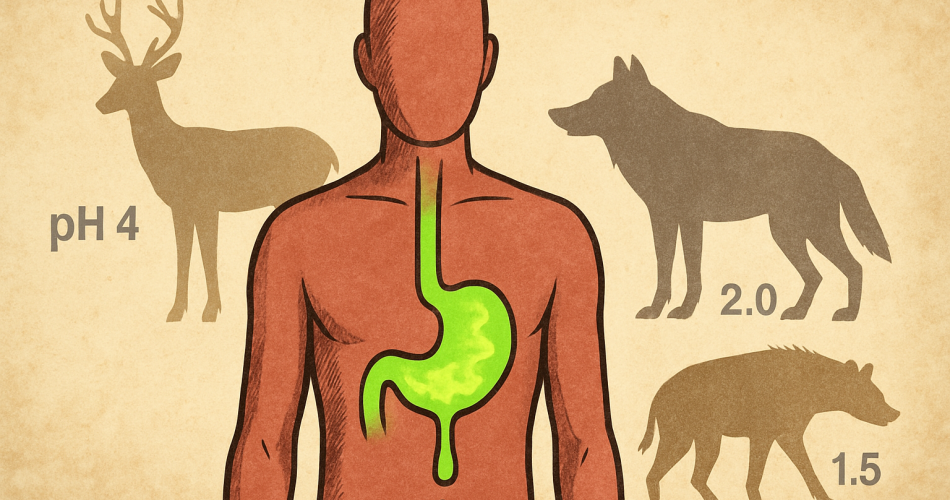If you lined up the digestive systems of mammals and dialed into their stomach chemistry, one detail about humans might raise an eyebrow: our gastric acid is fierce. Not just mildly corrosive — it’s on par with the pH found in scavengers like vultures and hyenas. While typical omnivores hover between a stomach pH of 2.5 to 3.5, and herbivores digest comfortably at pH 4 or higher, the human baseline — under fasting conditions — averages a sharp 1.5. That’s stomach acid strong enough to burn through more than just a salad.
Which leads to a strange question: why does an animal that now eats soft fruits, steamed greens, and grilled grains need a digestive system equipped for decaying meat?
Acid: Evolution’s Disinfectant
The best guess science can offer is simple, though hardly flattering — acid is our first line of microbial defense. Fresh plant matter isn’t especially dangerous in microbial terms; it rots slowly, and with relatively little bacterial load. But meat — especially the kind that’s been dead for a while — is a microbial playground. And for species that rely on such food, the ability to neutralize pathogens before they reach the gut is a life-or-death matter.
From this perspective, our stomach acidity makes less sense as the legacy of a peaceful forager than as the battle-hardened inheritance of a creature that spent hundreds of thousands of years scavenging and hunting — and often eating under less-than-ideal conditions. Cooked food is a recent luxury. Refrigeration, even more so.
Anatomy Tells Its Own Story
When you start mapping human digestive traits alongside those of other mammals, a clearer evolutionary fingerprint emerges — and it doesn’t look particularly plant-based.
| Trait | Carnivores | Herbivores | Humans |
|---|---|---|---|
| Stomach acidity (pH) | 1–2 | 4–7 | 1.5–2.0 |
| Intestinal length (× body) | 3–6× | 10–15× | ~8× |
| Dominant enzymes | Proteases, lipases | Cellulases (via microbes) | Proteases + amylase |
| Vitamin B12 source | Meat | Microbial synthesis | Animal foods / fermentation |
| Gallbladder bile | High concentration | Low concentration | High concentration |
In short: we are neither obligate carnivores nor gentle herbivores. Our digestive setup is a mismatched toolkit — part butcher, part baker — but heavily tilted toward animal consumption. Especially when it comes to what the body is most desperate to protect: its microbial entry points.
Disclaimer
The information provided in this article is for general informational purposes only. The content presented on this website should be considered solely as opinions and personal experiences. Read more
